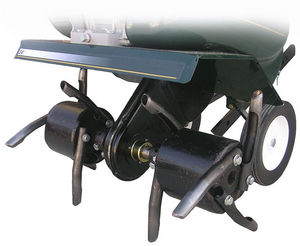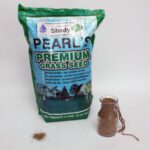Are you looking for a detailed guide to lawn aeration? Read on and learn what lawn aeration is, the benefits of the process, how to get started, DIY tips, what products and tools you need, and when to call in the cavalry.
What is Lawn Aeration?
Think of lawn aeration as jabbing holes in the soil, so the grass can breathe and the earthworms can wiggle. Okay, it is a bit more involved than this, but the basic tenet of lawn care aeration suggests that once a year – preferably spring – you combat soil compaction with the methodical extraction of little plugs of soil.
How Does Lawn Aeration Benefit the Lawn?
Show me a hard packed dirt surface with a few scraggly bits of grass desperately clinging to life, and I show you a lawn that hasn’t seen the business end of a lawn aerator. Foot traffic and other impacts on the lawn compact the soil, and if there is not the occasional plug removal, neither fertilizer nor water can penetrate the hard dirt. Aeration undoes the compaction.
How to Get Started with Lawn Aeration
Visit your local big box home improvement store and discuss lawn care aeration with a clerk. Find out if you can rent a lawn aerator from them, or if they can steer you in the direction of a business that does. Bring along a buddy to help you load the lawn aerator into your truck or minivan – yes, the weighted drum over the tines is very heavy – and get ready for a sweat filled afternoon of lawn aeration.
DIY Tips for Lawn Care, Aeration, and the Dirt on When to Call in Help
Unless your best buddy is a plumber and can bail you out, it is a wise idea to mark your sprinkler heads and any water lines that are close to the surface of the lawn. Depending on the length of the tines that you chose, there is a good chance that you might otherwise damage the sprinkler system.
Water the day before you aerate; you do not want a sopping wet soil, but one that is sufficiently moist to not have the consistency of concrete. Walk a horizontal line with your lawn aerator. Then, traverse the lawn again, this time in a vertical line. The trick is to attack the compaction from different angles.
Not the most attractive kind of lawn care, aeration leaves behind copious plugs of soil and grass. Nevertheless, leave these on the lawn; watering and nature will once again return them to the soil within a few weeks. Follow up your lawn aeration with seeding and fertilizing, and of course a good watering.
If you notice at any time that the strain of pushing a lawn aerator — which is extremely hard work – is beginning to hurt or that you might not be able to finish, call in some help. Your local church might have some college students who would jump at the chance to earn a few bucks for aerating your lawn.
Source
http://www.ext.vt.edu/pubs/turf/430-002/430-002.html; personal experience
Check out some of Sylvia Cochran’s other gardening articles, such as Organic Container Gardening Brings Herbs and Veggies to a Balcony Near You, How to Replant a Christmas Tree and Best Plants for Eco-Friendly California Landscaping.






